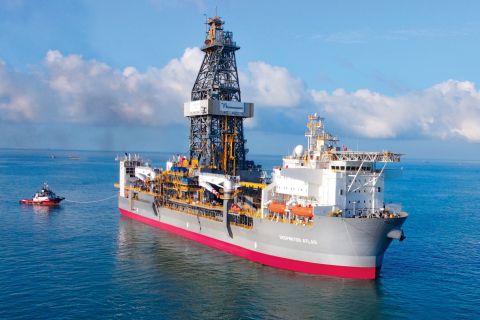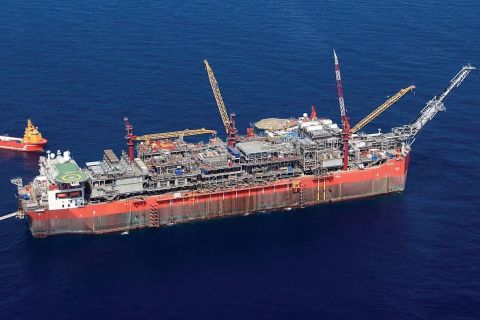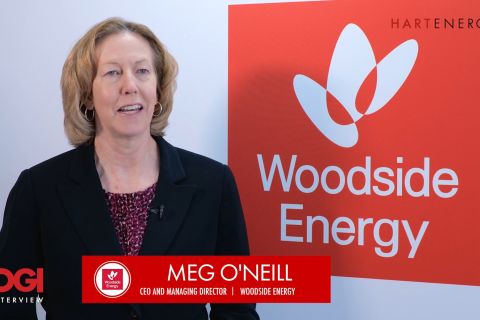Handicaps that oil and gas producers face in trying to provide competitive returns to shareholders may be more than simply challenging. Some obstacles that are inherent to exploration and production could make it impossible to improve returns materially, several Wall Street oil analysts and investors warn. The biggest problem is that the oil and gas business is very cyclical, several participants indicated during presentations to John S. Herold's 2000 Energy Pacesetters Conference in Old Greenwich, Connecticut. "The industry has not been kind to investors in recent years, particularly the E&P companies," said Thomas Driscoll, who follows independent producers for Lehman Brothers Inc. in New York. He was particularly critical of accounting maneuvers that seemed to obscure several companies' true performances in recent years. "Sometimes, I look at their accounting and feel as if I'm in the fiction section of a major bookstore," Driscoll said. Others questioned company projections that turn excessively optimistic. Robert V. Sinott, senior managing director of Kayne Anderson Investment LLC in Los Angeles, said that the private capital provider is not impressed with some producers' reports of 15% annual rates of return; its own energy fund has had a 30% return for the last three years. "When an E&P executive tells me that he expects 60% returns with a 30% cost of capital over 12 years, I start to look at finding costs and how much they'll actually increase each year-because he obviously hasn't," Sinott said. Still others said that many investors still are soured by the oil and gas industry's generally dismal returns in recent years. Robert L. Zorich, managing director of EnCap Investments LC in Houston, said that Standard & Poor's E&P Index has been a net loser since 1992. Yet the El Paso Energy Corp. (NYSE: EPG) finance subsidiary has produced 20% returns on investments with producers because they have been debt instead of equity. "Historically, producers and their investors both have been too optimistic," said Zorich. "The large capital surge 20 years ago ruined the climate for the higher commodity prices we see now." It's reasonable for equity- and debtholders to expect reasonably prompt returns of at least 10% on their investments, according to John McCormack, a senior vice president of Stern Stewart & Co. in New York. When he surveyed the results of leading oil and gas companies, he found that only Royal Dutch/ Shell, Exxon Mobil Corp., BP, Chevron Corp., Suncor Corp., Tosco Corp., Halliburton Co. and a handful of large upstream independents ever reached that level. "The problem is that for many producers, it will take years for their significant discoveries to ever generate returns," McCormack said. Panelists confirmed that investors prefer producers who acquire and exploit reserves, to companies that emphasize exploration, which generally results in significantly lower returns. G. Bryan Dutt, managing director of Ironman Energy Capital LC in Houston, added that he pays attention when an upstream independent sells during the commodity pricing cycle's periodic peaks. But other panelists said that it's more common for producers to hold onto properties for too long. "We prefer to see our capital used to create value, not hold assets," said Sinott. It can make a major difference if a producer clearly has high-quality management, the group agreed. Sinott specifically looks for executives that have investments in their own company equal to 10 times their annual compensation. A good management also has a coherent, proven investment strategy that it intends to continue pursuing with the additional investment, he said. Some investors use different determinants. Mark A. Baskir, a portfolio manager with the Strong Limited Resources Fund in Milwaukee, starts by looking for long-term success in a company's investment program, where the industry is in the commodity price cycle and what management brings to the table. But he also considers whether a company is poised to turn around dramatically. Amerada Hess Corp. was in that position two years ago when its chairman, John Hess, began to make it over with a heavier upstream emphasis, a joint venture with Petroleos de Venezuela SA for its Virgin Islands refinery and a more carefully directed marketing and retailing program, according to Baskir. He added that USX-Marathon Group is in a similar position now as its new chairman, Clarence Cazelot, assumes more control. Panelists also agreed that upstream oil and gas firms still are paying for past excesses. "The industry clearly overinvested during the last decade. Wall Street prolonged the situation by providing financing so readily," said Driscoll. "I hope this is behind us. Companies are increasing their spending more slowly this time. If they maintain this discipline, perhaps they can continue to meet their cost of capital when high commodity prices recede, as they almost certainly will." When depressed oil and gas prices undercut their bottom lines and obliterated their returns to investors, independent producers looked for other ways to measure their financial and operating performances. Several promoted cash flow as a more indicative sign of underlying financial strength. Others cited high operating margins and low lifting costs. Still others used their lean payrolls to show high revenues per employee. Wall Street generally was not impressed. It kept coming back to earnings, the traditional performance measurement for all businesses, as the best immediate indicator. That was difficult for upstream independents, particularly when mandated accounting procedures cut into net income, even though they were not relevant to actual operations, according to Mark Smith, who follows the sector for BMO Nesbitt Burns. It also excluded factors such as risk and investment opportunity that can create long-term benefits, he said during the Herold conference. Of 100 E&P companies that Smith studied, only six had positive earnings the last eight years. They also outperformed the Dow Jones Industrial Average and Standard & Poor's index of 500 leading industrial firms, and had the high-flying Nasdaq Index within their sights, he said. Yet producers with consistently high earnings did not always have high stock prices. "Earnings aren't the be-all-and-end-all measurement," said Smith. "But they do matter." Five leading North American independents agreed. "We're totally focused on earnings," declared James H. Prince, vice president, chief financial officer and treasurer of Stone Energy Corp., Lafayette, Louisiana. "In 1989, we developed a strategy to let us do this. We have concentrated our operations in a specific geographic area. "Although we have a reputation of making acquisitions, a majority of our new production comes from the drill bit," he continued. "Out of each dollar that we spend, 40 cents goes for development, 40 cents goes for exploration and 20 cents goes for acquisitions. When we come to Wall Street for capital, we take it right back to Lafayette to grow reserves and production." EOG Resources Inc. also believes in net income as a financial performance indicator, according to its chairman, Mark G. Papa. The Houston independent also focuses on a reinvestment rate of return, right down to its field personnel, he told the Herold audience. EOG also believes in growing more through the drill bit than from acquisitions. "We basically have captured more than 500,000 acres of farm-ins from majors in the last year," said Papa. "We've got some pretty interesting gas prospects we'll be drilling during the next six months." "This industry likes to talk more about growth than rate of return. But growth does not guarantee superior returns," observed Richard E. Bross, executive vice president of land and acquisitions at Louis Dreyfus Natural Gas Corp., Oklahoma City. High operating margins and low finding costs make a stronger case, he maintained. -Nick Snow
Recommended Reading
Rystad: More Deepwater Wells to be Drilled in 2024
2024-02-29 - Upstream majors dive into deeper and frontier waters while exploration budgets for 2024 remain flat.
Shell Taps TechnipFMC for 20K System for Sparta
2024-02-19 - The deepwater greenfield project in the Gulf of Mexico targets reserves in the high-pressure Paleogene reservoir.
After 4Q Struggles, Transocean’s Upcycle Prediction Looks to Pay Off
2024-02-21 - As Transocean executives predicted during third-quarter earnings, the company is in the middle of an upcycle, with day rates and revenues reaching new heights.
Remotely Controlled Well Completion Carried Out at SNEPCo’s Bonga Field
2024-02-27 - Optime Subsea, which supplied the operation’s remotely operated controls system, says its technology reduces equipment from transportation lists and reduces operation time.
The OGInterview: How do Woodside's Growth Projects Fit into its Portfolio?
2024-04-01 - Woodside Energy CEO Meg O'Neill discusses the company's current growth projects across the globe and the impact they will have on the company's future with Hart Energy's Pietro Pitts.





